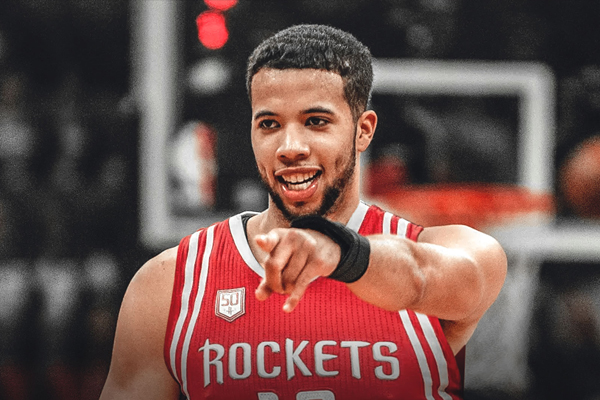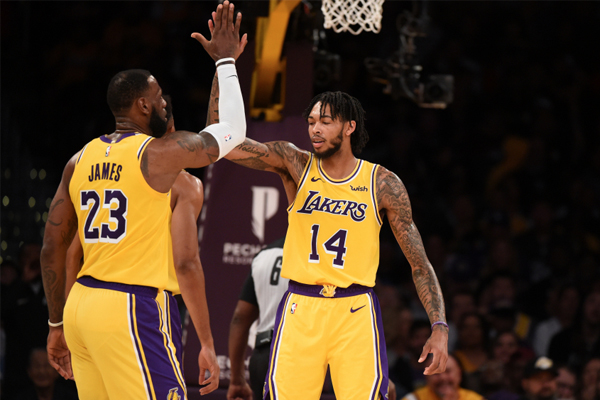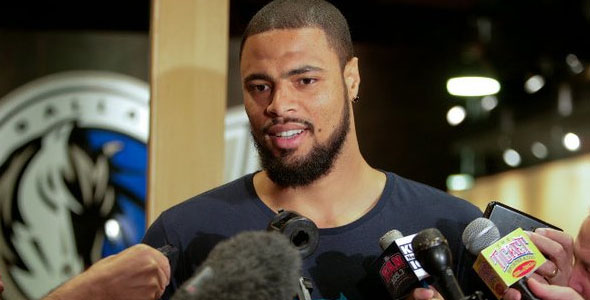If Larry Bird and Magic could eventually become friends, if the various interests in the U.S. government could come to a resolution on the debt crisis, and if the NFL owners and players could come to an agreement, surely it must be possible to end the NBA lockout and bring both sides together.
What I’m about to suggest is not a permanent solution, but this would bring NBA basketball back sooner than expected. Looking at the draw of the Goodman, Drew and Melo Leagues, to name a few, it’s pretty clear fans still want to watch great, if not star-driven, basketball—although defense seems to be optional.
This plan works for some—not for everyone—but it should satisfy NBA fans, and true basketball fans, that just want to see some good ball, as well as satisfy certain owners and players, while, at the same time, buying the NBA some much-needed time to continue, and hopefully complete, these extensive labor negotiations.
Although we’ve all been thinking about how to end the NBA lockout since it started, without all the hard numbers that teams are mulling over, it’s difficult to figure out a $300-400 million problem. While I was considering how to resolve the NBA lockout for the millionth time, another idea came to mind.
Maybe, I’ve been digging too much into NBA history researching the top 10 centers of each decade, but it occurs to me that this season could be salvaged in an unusual way.
Instead of canning the 2011-2012 season or having half a season, here is a short-term fix to the problem:
Until a new labor agreement can be reached, the NBA should reduce the league down to the teams that are actually making money. NBA.com says 22 of 30 teams are losing money, so that leaves us with eight teams.
The NBA states that at least the Los Angeles Lakers, New York Knicks, Chicago Bulls, Boston Celtics, and the Los Angeles Clippers are making a profit.
Now, the difficulty here is finding a few more teams to roll the dice and make this both interesting and feasible—I’d suggest maybe the NBA Champion Dallas Mavericks, who are owned by billionaire Mark Cuban. Add the San Antonio Spurs, the best-run small-market team, and the Miami Heat, currently one of the NBA’s biggest attractions. Now, we have a minimum of eight teams.
Some other teams that might be able to make the numbers work include: the Phoenix Suns, Sacramento Kings, and the Philadelphia 76ers, which Forbes also ranked in the top 12 NBA teams in terms of profit margin and value only a few seasons ago. Also, Atlanta, Washington, and San Francisco are big markets, and their teams could likely get by. What about the New Jersey Nets and their billionaire owner?
Frankly, I want all 30 teams playing. But, the owners do not want another season under the same labor conditions as the last CBA (Collective Bargaining Agreement). If they wanted to play, I’d invite any other team (owner) that wants their team to join. Right now, that would leave us with at least eight teams, and not just any eight teams.
East
Heat
Boston
New York
Bulls
West
Lakers
Clippers
Spurs
Dallas
We’re talking about primarily the biggest markets, according to Forbes, and some of the NBA’s original teams—Lakers, Celtics, and Knicks.
Not only that, but this smaller league would still have major super-star power: Kobe Bryant and Pau Gasol (Lakers); Kevin Garnett, Paul Pierce, and Ray Allen (Celtics); LeBron James and Dwayne Wade (Heat); Amar’e Stoudemire and Carmelo Anthony (Knicks); Derrick Rose (Bulls); Dirk Nowitzki (Mavs); Tim Duncan (Spurs); and fan favorite Blake Griffin (Clippers).
Right there, that’s six former league MVP’s (including last season’s MVP), countless Finals MVP’s, and simply some of the best talent the league has to offer.
Don’t think it could work?
Between the early and late 1960’s, the NBA expanded from about 8 teams to 16. And, the league has continued to grow.
But, in the 1950-1951 season, the league actually reduced the amount of teams from 17 to 11. Of those, eight made the playoffs and the result was a classic 7-game NBA Finals between the champion Rochester Royals and the Knicks.
In 1956, the NBA had only eight teams. Of those, six made the playoffs. This was the season the great Celtics’ dynasty with Bill Russell and Bob Cousy began. In the finals, the Celtics defeated Bob Pettit’s St. Louis Hawks in another classic 7-game series. The 1959-1960 season, that also had only eight teams, ended in similarly dramatic fashion with Celtics beating the Hawks in 7-games for the NBA crown.
1960 Finals
Sure, no one wants anything but a full 82-game NBA season with all 30 teams, but there is historical precedent that an eight-team league could not only work, but be very entertaining as well.
I know this is a radical solution, but I think the old proverb “desperate times call for desperate measures” really applies here.
This would not be a permanent solution either; they would just play a season this way, while the owners and players hammer out a new deal.
Even though this is a drastic idea, for the record, I love the NBA the way it is—when there is a season. If they are not even going to have a season, why not do something radical just to give the fans—not to mention some owners, players, arena employees, broadcasters, and television partners—something?
I realize there are a number of reasons to dislike this proposal, a number of reasons why it may not be ideal, and even reasons why it would not work, but wouldn’t it be better than no NBA season at all?
Rob S. De France is a College and University instructor of English Composition living in Los Angeles. He has a B.A. in English and an M.A. in Rhetoric, Composition, and Writing. De France has played, coached, and officiated competitive high school basketball in California for many years. Recently, De France, his wife, and another colleague started an internationally read magazine at Shwibly.com.





















